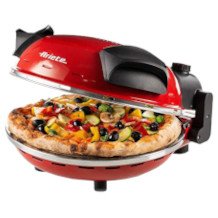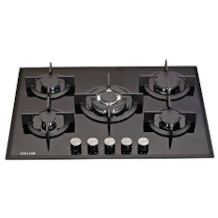Portable induction cooker purchasing advice: how to choose the right product
- The most important facts in brief
- Portable induction cookers are characterised by their compact design.
- Thanks to the simple power connection, they can be used almost anywhere. Portable induction cookers are particularly popular for camping.
- If you want to use larger pots and pans on the portable induction cooker, you should pay attention to the diameter of the cooking zones.
- For frequent transport, small versions with individual hobs are useful.
- Several levels are available for setting the temperature range. The more levels available, the more precisely the temperature can be set.
Modern and mobile at the same time
When choosing a new kitchen or a new cooker, variants with induction hobs are particularly popular. Cooking with induction is the most modern way of preparing food, and the hobs are equipped with various convenience features. They heat food faster than other types of hobs and save energy in the process.
If you want to get to know induction hobs, you don’t have to buy a high-priced built-in hob. Small, portable induction cookers with one or two hobs are more practical and cheaper. They are not only suitable as a supplement to the glass ceramic or gas hob, but can also be used independently of the cooker and oven. Consumers can take the appliances camping or place them in the hotel room while on holiday. The range of applications for portable induction cookers is diverse and efficient thanks to the design as well as the functional principle.
How does cooking with induction work?
Although induction hobs also work with electricity, the way they heat food is completely different from other types of hobs. Instead of heating elements, there are flat induction coils made of copper under the glass ceramic plates. The current flowing through the coils generates an electromagnetic alternating field. As soon as the cookware is placed on the cooking zone, the electromagnetic field generates an induction current in the base. As a result, only the cookware and its contents heat up. As soon as users remove the pot or pan from the plate, the heating stops. The hob remains cool throughout, except for the retroactive heat of the cookware. Due to the direct heating of the cookware, the heating time is shorter than with other hobs. However, not all pots and pans are suitable for induction because the base must be magnetisable.
Reasons for and against portable induction cookers
Since the portable induction cooker does not heat itself, but only absorbs the return heat from the pot or pan, the risk of burns is low. The residual heat indicator further reduces the danger. Cooking with induction is therefore particularly safe. In addition, heating the cookware only saves energy, and at the same time the interior reaches the right temperature more quickly. Cooking on and off is therefore quicker than with other cooker tops. This takes some getting used to: the oil, for example, is already heated before the user has all the ingredients together.
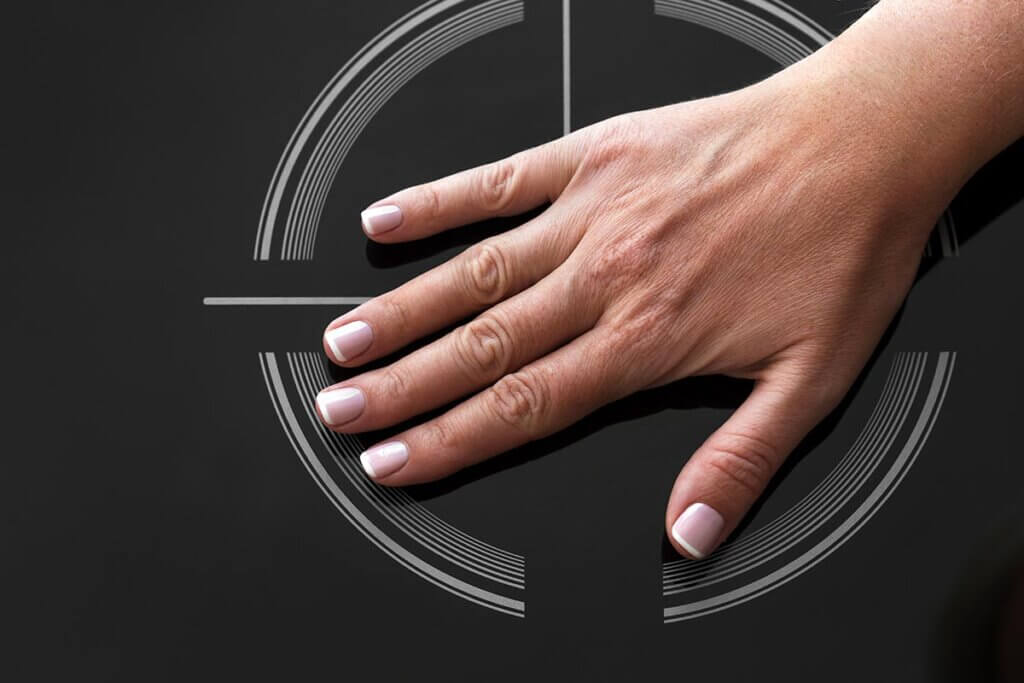
Grease splashes or sauces cannot burn onto the plate, which makes cleaning easier. However, induction hobs cause further sounds in the form of humming, whistling or clicking in addition to the noise of the cooler inside. Noise-sensitive people in particular perceive these as annoying. For anyone dependent on a pacemaker, it is advisable to consult a doctor, as the electromagnetic field can cause interference.
Portable induction cookers allow very fine adjustment of the temperature, so that food can be prepared with pinpoint accuracy with a little practice. The mobile hotplates are more space-saving than permanently installed induction hobs. This makes them particularly suitable for small households. Moreover, no installation is necessary: Portable induction cookers can be taken anywhere and simply switched on. This is why they are often used for camping. In student dormitories, mobile hot plates replace kitchen units. In the case of a broken cooker or after a move, they are an emergency solution until new hobs are available.
Although suitable cookware is required to use portable induction cookers, many modern pots and pans are now equipped with an “all-stove” base and are therefore suitable for induction.
In contrast to an induction hob, the mobile version is much cheaper to buy. It is therefore suitable for anyone who wants to test cooking with induction first before choosing the large built-in version. However, the price is high compared to other hobs. Mobile hot plates are also smaller, so that not all components of a large meal can be prepared in parallel.
Advantages
- Fast heating and cooking
- Low risk of burning
- Energy-saving
- Easy cleaning
- Fine temperature adjustment
- Space-saving
- Mobile
- Less expensive than induction hobs
Disadvantages
- Suitable cookware required
- Acclimatisation time
- Most expensive mobile hob type
- Fewer cooking zones
- Noise level
- Sometimes interferes with pacemakers
The ideal hotplate for every need
Induction hobs are the mobile and compact version of induction hobs and therefore have similar characteristics. Due to their design, the range of functions is smaller. Nevertheless, portable induction cookers have all the important features that make cooking with induction so special and can be used almost anywhere. Safety is guaranteed by features such as pot detection or a child safety lock. The following criteria will help you buy the right hotplate.
Well-known brands
Aobosi |Arendo | Caso | Klarstein | Medion |Miji | ProfiCook | Rommelsbacher | Severin | Steba | Tefal | Unold | WMF
Single or double hotplates
In contrast to induction hobs, which sometimes have more than four hobs, hotplates have only one or two hobs. There is room for one pot or one pan on single hotplates: Their diameter depends on the dimensions of the cooking zone. Single hot plates are mainly suitable as a supplement to the regular hob and for occasional use. They are also easier to transport than double hotplates. On camping trips, single hot plates provide hot meals without taking up much space in the luggage.
However, if you want to cook a filling side dish and vegetables at the same time, for example, you are better off with a double induction hotplate. The two plates can be set separately, so preparation is far more efficient than cooking all the components one after the other on one hob.
Handling and functions
Modern portable induction cookers can be controlled using a touch panel instead of knobs or dials. They have controls for setting the temperature and often some direct selection buttons as well as a timer. The direct selection buttons are usually preset cooking programmes, for example for boiling milk, simmering, frying or deep-frying. A keep-warm function that keeps the food from cooling down after the end of the cooking time is also an advantage. If the mobile induction hob has a power or booster function, food and liquids heat up even faster.
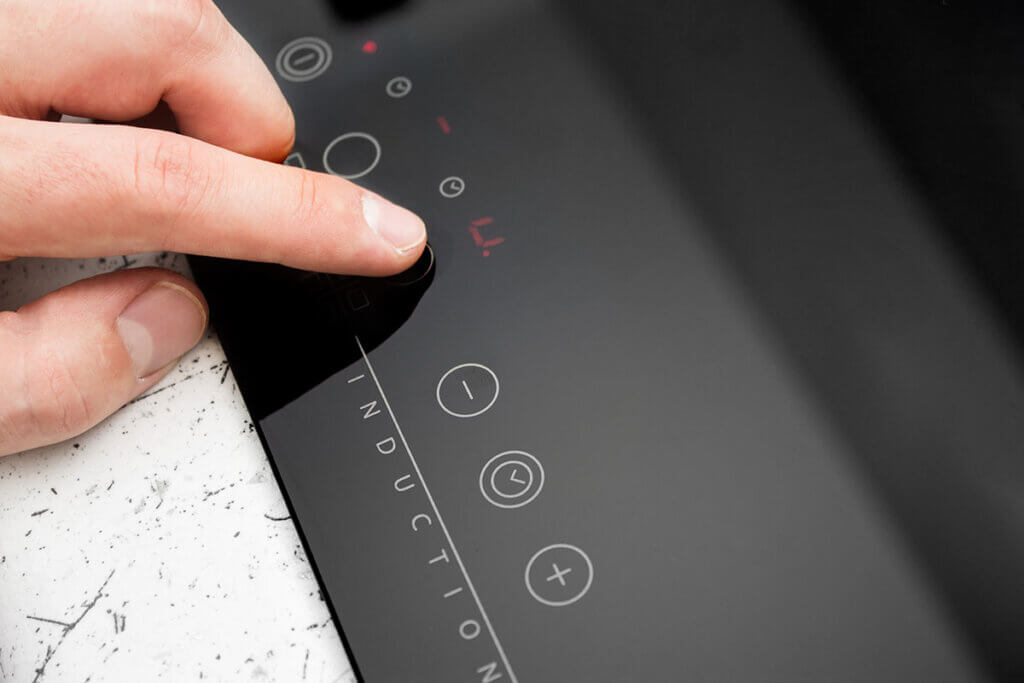
The temperature is regulated either with the help of a plus and minus button or a slider. The settings can be seen on a small LED display. This display should be easy to read. With double hotplates, a separate control panel is important so that the hobs can be set independently of each other without any problems.
Dimensions and weight
The dimensions of the portable induction cooker that are most suitable for your purposes depend on whether it is only intended for the kitchen or whether it should also fit in your luggage. For use in your own home, the number of hobs and the size of the cooking zones are more important than the overall dimensions or weight. The appliance should be chosen according to need: Larger cooking zones are required for larger pans and pots. For travelling, on the other hand, a compact model is recommended, usually a single hob.
For example, while the single induction hob CT 2010/IN from the manufacturer Rommelsbacher is 30 centimetres long and 38 centimetres wide, the version with two zones, the CT 3410, has dimensions of 60 x 36 centimetres. The weight is also about twice as high: the single hotplate weighs 2.68 and the double hotplate 5.44 kilograms. The double induction hotplate from Clatronic measures 57.5 x 35.0 centimetres and is hardly lighter, weighing about 5.0 kilograms.
The size of the cooking zones determines the maximum base diameter of the pots. If the portable induction cooker is used indoors, the largest possible cooking zones are recommended, whereas a 20-centimetre base diameter is sometimes sufficient at the campsite. When buying a double hotplate, prospective buyers should note that one hob is usually narrower than the other.
Construction and material
Ceran and glass ceramic – different materials?
The terms “ceramic glass” and “glass ceramic” are usually used in connection with hobs. Ceran, however, is a brand name, not a specific material. The manufacturer is Schott AG of Mainz. Nevertheless, the name has become established as an everyday designation for glass ceramic hobs.
In terms of construction and the materials used, portable induction cookers differ only slightly from one another. The surface is usually made of glass ceramic. While many mobile hot plates – like the hobs of induction cookers – are not rimmed, there are other variants where the cooking surface is surrounded by a housing on the side. This is made of plastic or stainless steel. It protects the fragile glass ceramic from breakage. These models are particularly suitable for camping and travelling. Portable induction cookers without a housing can also be installed in the kitchen if necessary. They thus assume the function of a self-sufficient built-in induction hob that works independently of the oven.
Power
The power of a portable induction cooker determines on the one hand how quickly a hob heats up, and on the other hand how high the power consumption is. The value, given in watts, should be set higher for double hotplates than for a single one. If a single hotplate works at about 2,000 watts, the power benefits the existing cooking zone. With a double hotplate, the power is divided between the two zones. When used simultaneously, heating takes significantly longer than with a single plate.
It is important to note, however, that the available energy does not necessarily supply both hobs to the same extent. With the double induction hob from Aobosi, for example, the left side has a maximum power of 2,000 watts, while the right side heats up with a maximum of 1,500 watts.
How loud are portable induction cookers?
With portable induction cookers, the stated noise level does not refer to the total volume. It describes the noise generated by the integrated cooler. However, unpleasant sounds also occur during cooking in frequencies that the noise meter does not register adequately. Depending on the appliance, these can take the form of anything from a low hum to a loud buzz. Since some people react very sensitively to these high-frequency noises, a model with induction sounds that are as discreet as possible is recommended. Low-noise products in which the cooler masks the background noise are advantageous. Otherwise, even a portable induction cooker whose fan is quieter than a normal conversation at less than 60 decibels can be annoying with strong background noises. The noise level in the product descriptions therefore serves as a guide.
Important features
While portable induction cookers do not come with a host of convenience features, unlike their larger siblings, cooking with the compact design is thoroughly enjoyable thanks to a few practical setting options.
Adjustable temperature range

Compared to other hobs, portable induction cookers allow a more specific temperature setting. In most cases, temperatures between 60 and 240 degrees Celsius can be selected. For this purpose, the appliances have several power levels: The more levels, the more temperatures the hob covers. For those who like to cook, a model with at least ten levels is advisable. For hotplates that are mainly intended for camping, fewer levels are sometimes sufficient.
Timer

Most portable induction cookers are equipped with a timer. Although the maximum time that can be set depends on the model, the majority of commercially available mobile induction hotplates have a timer of either 99 or 180 minutes. With some high-priced models, a selection of up to 24 hours is possible. Depending on the appliance, the setting can be made in minute increments or at longer intervals, for example every five minutes. Thanks to the automatic switch-off, the hotplate switches off after the set time has elapsed.
Safety features

High-quality portable induction cookers are equipped with various safety features that effectively minimise the risk of injury and damage. The automatic timer switch-off, for example, protects against overheating and switches off the appliance even when not in use. Thanks to the automatic pot detection, the induction plate starts operation with induction pots and stops it with unsuitable cookware. The key lock ensures that amateur cooks or their household members do not accidentally change the settings. Combined with a child safety lock and residual heat indicator, little ones are protected from injury.
Which cookware is suitable for induction?
Any cookware with a magnetisable base can be used on induction hobs. Pots and pans made of iron and cast iron are suitable for this heating method. This also applies if they are enamelled. Dishes made exclusively of aluminium, stainless steel and copper, on the other hand, are not ferromagnetic. However, this does not mean that you have to completely replace dishes made of these materials when switching to induction. Many manufacturers equip pans and pots with an additional ferromagnetic layer and thus create so-called “all-stove bases”. Cookware labelled as all-stove base can also be used on portable induction cookers. For identification purposes, there is often a symbol with three wire spirals on the underside. If you are unsure about older kitchen utensils, you can test their suitability with a magnet. If it sticks to the pot, it is suitable for induction.
Tips for using portable induction cookers
Induction hobs offer many possibilities due to their short boiling and reaction times as well as the fine temperature setting, but they take some getting used to in the beginning. Those who have previously cooked on a conventional electric hob should pay particular attention to the shorter cooking time and adjust their preparation in this respect.
Thanks to the more precise and fast-acting temperature adjustment, amateur cooks can also optimally prepare temperature-sensitive dishes. A special cooking method is so-called slow cooking: Here, the food is cooked slowly at low temperatures between 60 and 120 degrees Celsius. The portable induction cooker ensures a constant low temperature and even heat distribution in the pot.
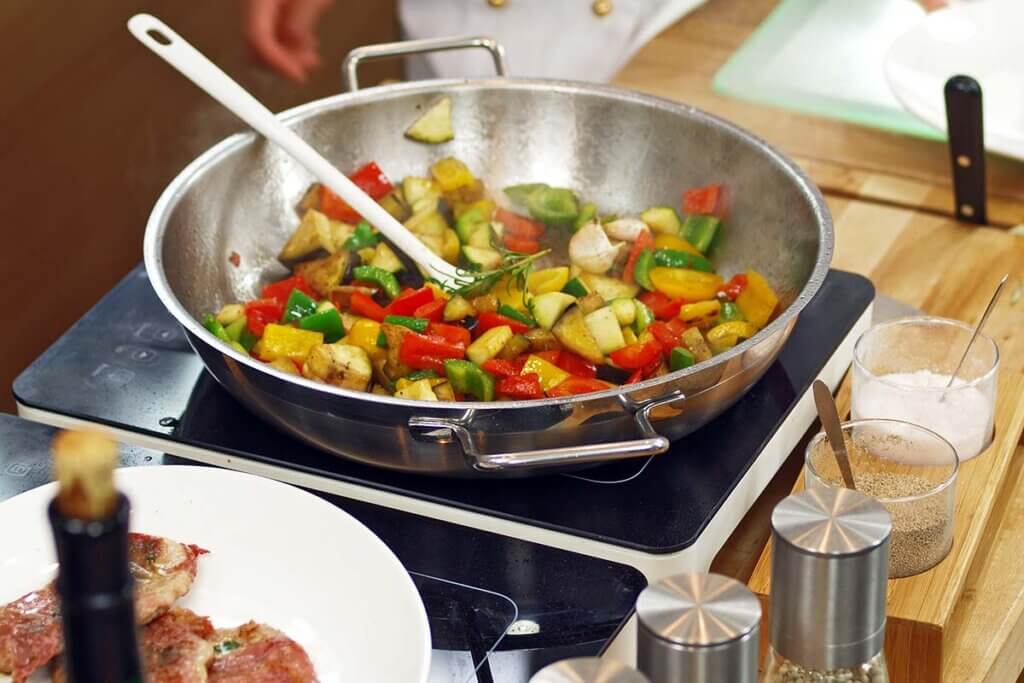
Since slow-cooking often takes several hours, a portable induction cooker is particularly practical: while the food is on the plate, the built-in hob can be used for other purposes.
How is an induction cooker cleaned?
Since induction hobs themselves do not get hot and overcooked milk or food residues cannot burn in, cleaning is usually easy. After use, it is usually sufficient to wipe over the cooking surface with a damp cloth. For light soiling such as grease stains, a damp sponge or cloth and some washing-up liquid are suitable. Alternatively, you can dissolve a little lemon juice or vinegar in warm water. If you do find stubborn stains, you can remove them gently with a ceramic hob scraper or use special cleaning agents for induction and glass ceramic hobs.

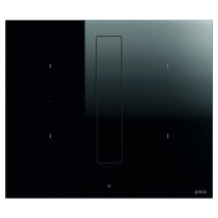
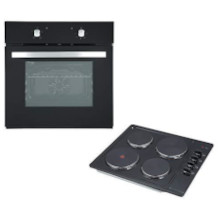
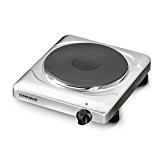
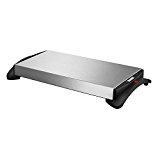
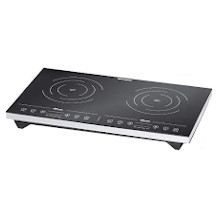
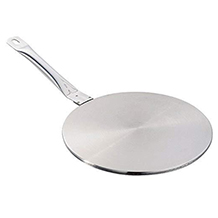
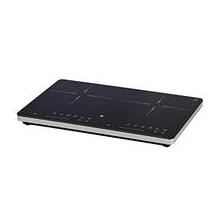


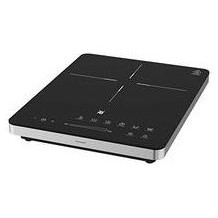
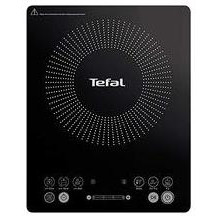
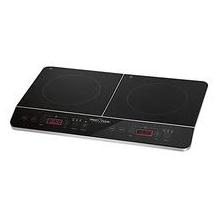

 510 reviews
510 reviews

